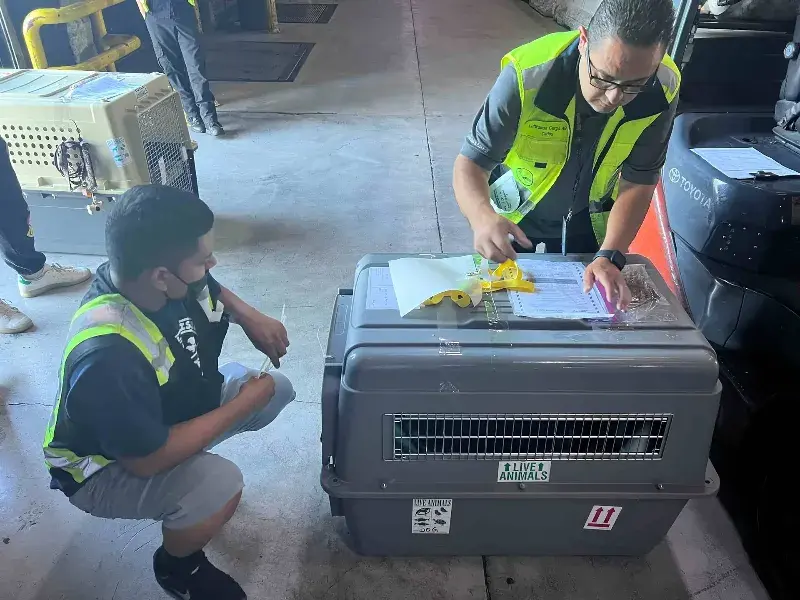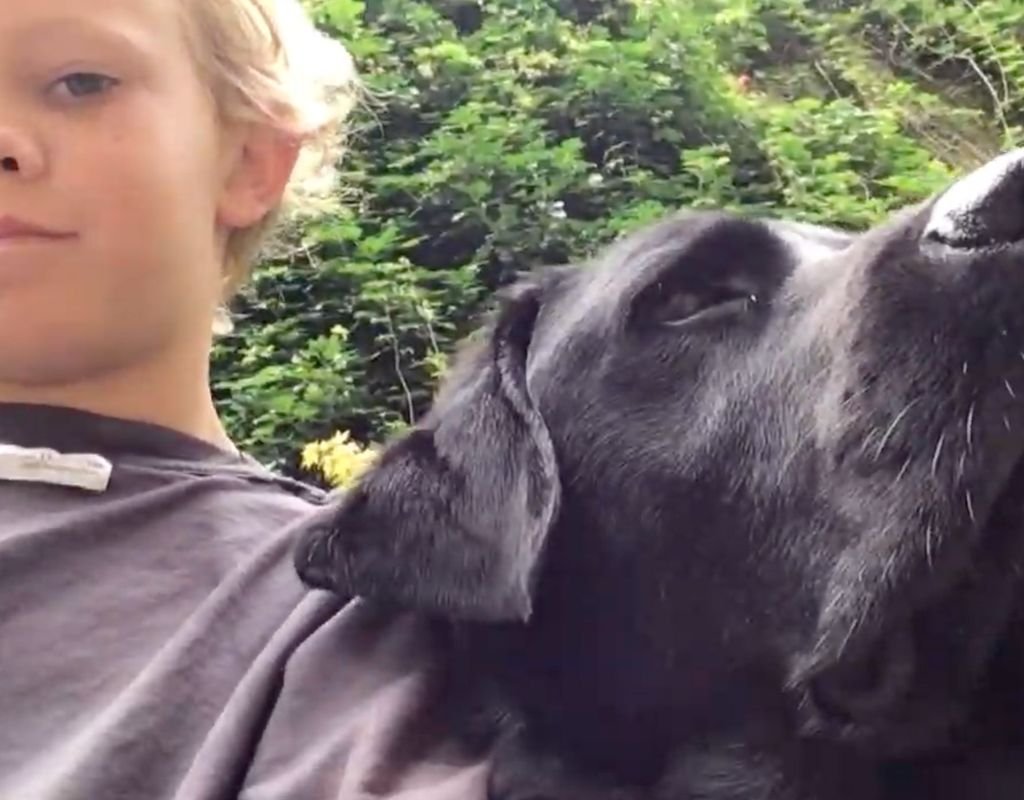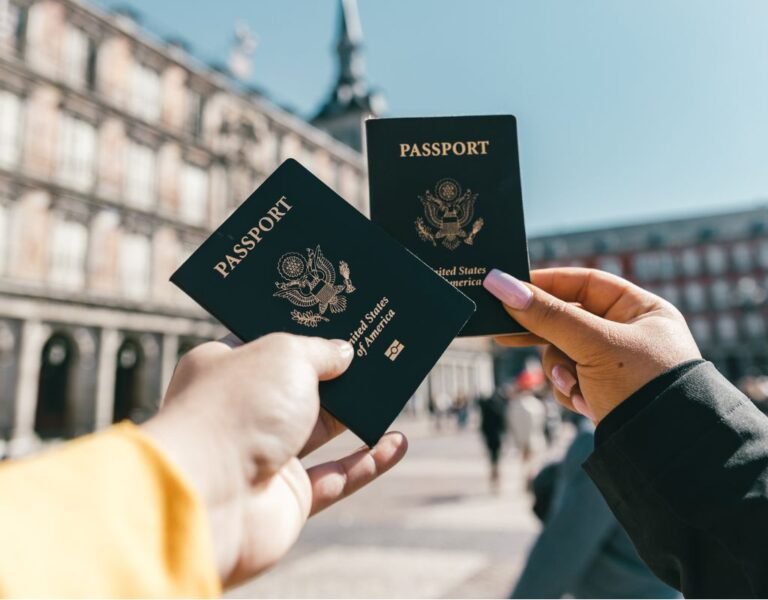Shipping Your Pet Internationally: A complete guide
|
Are you wondering how to go about shipping your pet internationally? Here’s the low down!
When we decided we would be living and traveling internationally, figuring out how to get our big dog Mo overseas safely and comfortably was very important to us. It required a lot of research to find the best possible methods to get him abroad successfully.
Here is what we learned and how we managed to get him all the way to a small island off the coast of Spain from our home in California. And now he travels all over the world with us!
Mo is our three-year-old Labrador Retriever, and he is family. I realize not everyone can relate to what crazy dog people we are, but Mo is magic and medicine and pure love.
We got Mo three years ago during a particularly challenging time for our family and from the very first moment we held Mo he has been nothing short of angelic.

Labradors are known for being mellow and gentle, but Mo takes it to a whole new level. He barely barks, cuddles endlessly, and has more emotional intelligence than most people we know!
Mo is a steady source of warmth, love and puppy breath. And even though getting him on a different continent required a lot of planning it was well worth it and he makes every international adventure better!

Mo had a great life in Santa Barbara before we moved abroad. He slept and ate and received an inordinate number of cuddles from not only our family, but anyone who met him. He would walk on the beach and swim in the ocean everyday…sometimes multiple times a day! He greeted absolutely every person or dog like a long-lost friend without exception.
But determining how to get Mo to Mallorca from California was by far the most stressful part of the entire move abroad for us. And that is saying something considering we had to liquidate our entire house AND uproot and move three kids!
However, something about moving an animal who was not only so gentle, but unable to communicate proved to be worrisome for us. We were concerned about how he would tolerate such a long journey across the globe. Mo would be out of our sight and with strangers for almost forty-eight hours. He had also never even seen a dog crate before in his life, and now he was going to have to be in one for VERY long stretches of time.
Like everything else with our international move we did a lot of research. Here is what we learned and how we were able to keep Mo comfortable and safe.
Shipping a Pet Internationally from the United States to Europe
1. Deciding on a Route and Airline Carrier…
We first started to read and explore about the different international carriers and routes that even allowed big dogs. This narrowed down the search to a few carriers.
There are rules and regulations depending on each airline with respect to what size and breed of dogs can go in the airplane cabin. We ruled out right away that having him with us was not an option due to his size, which meant we were exploring which routes and airlines would work best for him to be in cargo from California to Spain.
We talked directly to multiple airlines who shared with us their practices around pet transport. We also reached out to private companies that handled large animal transportation and crossed referenced all the information we were provided.
I had conversations with three different companies that provide private services and they proved to be very informative. They were extremely knowledgeable about the best airlines when it comes to transporting big animals. They also explained to me the best routes with facilities for big animals.
As it turns out all three companies had the exact same recommendation for Mo’s route which gave me confidence this was the way to go. They all suggested Los Angeles to Frankfurt on Lufthansa due to the large animal facility in Germany where he would be able to get the care he needed.
I started to read all about it and became increasingly more comfortable with the idea. Lufthansa also gets the highest marks and ratings when it comes to big animal transport. They have an impressive facility that you can read about to support shipping large animals.
2. Hiring a Private Company…

Little did we know that shipping a pet internationally would be one of the higher cost items of relocating to Europe. We interviewed three companies that help with shipping big dogs overseas and there was a big range in cost. We ended up going with the middle of the road estimate. The service provider we chose happened to be located very close to the Los Angeles airport where we were departing from, which also made logistics a bit easier.
For reference the middle of the road quote was $1800. There was one company that was much pricier and another that was a lot lower, but we liked our communication with this particular staff and they made us feel at ease about the process.
We could have just gone through the airlines, but the private companies provide an extra degree of knowledge and experience that was helpful and gave us peace of mind.
The private transport company is in constant communication with the airport staff, can stay with your dog and give you real time updates. They served as a liaison for Mo’s itinerary, provided information on the best crates and helped us with all the complicated paperwork as well.
There is not a lot of room for error with the undertaking of shipping a big dog six thousand miles, so we looked for as much reassurance and reinforcements as we could get. Oh, and the entire staff was clearly made up of animal lovers who were genuinely trying to make Mo comfortable! Every time we talked to them they shared stories about their own pets and assured us Mo would be in good hands.
3. Choosing a Crate…
Picking the right crate is a science. There are three main considerations when choosing a crate to ship a large dog, including making sure it is the proper size, is it comfortable and does the crate meet airline standards.
It’s important to check and double check on all these fronts.
Choosing the right size… there are numerous resources on the internet that guide you on how to measure your dog to make sure you get the correct size crate. This Petmate crate worked great for Mo.
Comfort… making sure your dog is comfortable is important and I would err on the side of bigger crates for longer journeys. Dogs need to be able to stand up and turn around in their crate to readjust. We also bought a orthopedic mat for the inside of the crate to provide maximum comfort on Mo’s joints for the long journey.
Confirm…once you have the crate picked out confirm with both the pet transport company and the airline carrier that it is suitable and meets their standards. There are some types of crates that airlines will not allow, and we didn’t want to find out on the day of departure that they wouldn’t accept our crate.
4. Medication…
One of the most frequent questions we get asked is did we medicate Mo? I was open to the idea and wanted to explore it if it could make him more comfortable, so we asked several experts. Not only did our vet insist this was not advisable, but so did all three pet transportation companies.
All four of these experts advised that medication can interfere with respiration and heart function and cause dogs to be confused and disoriented during travel. Check with your vet, but this is what we heard from multiple sources and so we did not medicate Mo.
5. Paperwork and Requirements…
There were four pieces of paperwork required to ship Mo to Spain. The four items required were Microchip verification, proof of vaccines, record of physical exam (performed by a vet no more than ten days before departure) and USDA endorsement. Check with the country you are traveling to in order to understand their unique requirements, as every country is different.

6. Crate Training…
The thought of training a three-year-old dog to be in a crate for hours felt impossible at the outset. But the process of training him went surprisingly smooth. Because Mo had never been in a crate, I spent a lot of time reading about how best to start the process of training him to spend time in one. I am no dog trainer, but this is what worked for us.
The biggest piece of advice I received was start training as far out as possible before your departure. This allowed us to not be impatient, take our time with the training and make sure Mo didn’t feel any urgency while being trained.
After purchasing the right crate, I put it in our kitchen by his food and water bowl for a few days so he could see and smell it.
I kept the top half of the crate and the front grate off initially (this was an excellent tip someone suggested!)
After a few days I would entice him in the crate with a treat and he would walk in and out to get his treat.
A few days later I would have him come in and sit for a few seconds in order to get his treat.
I then put the grate on the front (still no top) and would have him sit for a while when I was in the kitchen cooking, while giving him a lot of praise.
Eventually, I would walk out of the room and have him lay there for longer and longer periods.
I finally put the top on, and he would very peacefully would go in the crate and spend some time.
This process took about two to three weeks, but went smoothly! I think the key was taking it in small steps and not rushing and feeling relaxed through the process.
Mo Arrives in Spain!…
After researching carriers, airlines, crates and training it was time to leave and begin the voyage! We drove him to Los Angelas International Airport and sent him on his way.
Mo ultimately had a very successful journey from one side of the globe to the other. However, there were indeed some extra steps taken to help keep him comfortable. The second we saw his sweet face in Barcelona, with his tail wagging, we all breathed a sigh of relief. An hour after arriving in Mallorca, after a final ferry ride, Mo was swimming in the Mediterranean!
We can’t imagine life without Mo and it has been fun to see him adjust to his new life here in Spain.

Mo’s Itinerary from Start to Finish….
Mo’s journey from start to finish lasted about forty hours! It consisted of the following…
- a car ride along the California coast to Los Angelas International Airport
- two plane rides (the first flight was 11 hours and the second flight was 3 hours)
- a cab ride
- a ferry ride across the Mediterranean
- a final cab ride to his new home… totaling forty hours of travel!
Here is the breakdown…
5:30am Car ride from Santa Barbara to Los Angeles Airport
8:00am Meet dog transport liaison and leave Mo with him
8:30-2:00pm Mo spends time in crate, gets regular walks, water and we receive pictures and updates
2:00pm Mo gets loaded on plane and we receive notification that he is securely in cargo
3:30pm take off from Los Angeles International Airport on an eleven hour flight…this was the hardest leg!
11:30am arrive in Frankfurt’s large animal facility
12:00pm Mo gets unloaded, walked and put in large animal kennel with food and water
4:00pm Mo gets loaded on another two hour plane ride to Barcelona
7:30pm Mo lands in in Barcelona
9:00pm Customs processing
9:30pm We finally receive Mo after clearing customs with his tail wagging!
10:15pm Board ferry for eight hour ocean journey. Mo stays in our cabin and spends a lot of time outside making new friends and learning some Spanish!
6:00am We arrive in Palma, Mallorca
7:00am Final cab ride to house rental in our new town
8:00am Mo’s first swim in the Mediterranean!

Ship a Pet Internationally FAQ
Which airline allows pets in cargo?
When flying your pet across the Atlantic, several airlines offer the option to transport your pets in cargo. Lufthansa, KLM, and Air France are well-known for their pet-friendly policies, allowing pets to be transported in both the cabin and cargo hold. Air France, for instance, allows cats and dogs in the cabin or cargo, with costs ranging depending on the size and destination of your pet, starting from €30 to €200.
British Airways allows pets to travel as cargo, using specialized services to ensure their safety during the flight. Meanwhile, Lufthansa offers a relatively economical option with charges starting around €55 for pet travel in the cabin and varying for cargo based on the distance and size of the pet
What is the most dog friendly airline?
Delta Air Lines is widely regarded as the most dog-friendly airline for transatlantic flights in 2024. They have been noted for their customer-friendly pet policies, which include relatively lower fees compared to other airlines. This makes them a popular choice for pet owners traveling with dogs, especially since they provide attentive service to ensure the comfort of both pets and their owners during flights.
Additionally, airlines like Lufthansa and KLM/Air France also rank highly for pet-friendliness on transatlantic routes. Lufthansa is noted for allowing multiple pets per passenger, which is beneficial for those traveling with more than one pet.
KLM and Air France offer a comprehensive pet policy that accommodates various types of pets in both the cabin and cargo hold, depending on their weight and size, making them a flexible option for pet travel. It’s also worth thinking of which airports will have the largest animal facility before choosing your flights since this can make a significant difference in comfort for your pet.
Is it better to fly pets as cargo or checked baggage?
Flying pets as cargo is generally considered safer and more comfortable compared to checked baggage. Cargo holds are pressurized and temperature-controlled, similar to the passenger cabin, and pets are handled by specially trained staff. This ensures better care compared to the general baggage handling processes.
What kind of pet carrier can I take on a plane?
For pets in the cabin, carriers must be soft-sided, secure, padded, and made of water-repellent material with nylon mesh ventilation on three or more sides. These carriers should fit under the seat in front of you. For cargo, pets must be in a hard-sided, IATA-approved kennel that is adequately ventilated and allows the pet to stand, turn around, and lie down comfortably
Shipping a Pet Internationally: The Wrap-Up
We appreciate how important animals are to so many people, and we hope sharing how we navigated Mo´s journey can help others as they determine the best practices for their own pet´s travel!
We would love to hear about travels with your pets so send us your stories!
Our Favorite Travel Items for Pets…
We are lucky enough to travel all over the world with Mo. So we have put together a list of our favorite pet travel items that make things easy for us to take him with us all over the globe. Some of our favorite items are listed below…
Tangle Free Retractable Dog Leash: We prefer retractable dog leashes because they allow Mo to explore farther distances when we are in unfamiliar places. This leash is super durable and has put up with a lot of wear and tear.
PetMate Sky Kennel: This kennel is fantastic because it allows Mo a lot of visibility when traveling, room to stand up and turn around and meets all airline requirements. Highly recommend if you need a crate for big dogs.
Dog Food and Water Travel Bowls: We take these everywhere we take Mo! They collapse and are made of lightweight silicone so they are great for packing. We also attach them to our backpacks when we are hiking and camping because they allow us to feed Mo on the go.
Back Car Seat Cover: This back seat cover makes travel so much easier for Mo when we are traveling long distances by car. Last year we drove through 25 states and he was so comfortable the entire way. The cover is very durable, easy to clean and easy to use.
Read here on how to find a home abroad and be sure to check out our post on the Best Airlines from the United States to Europe!

Get Started Today!
How to Move Abroad
A Workbook to help you make the right choices
Use our easy to follow roadmap to help you find the perfect location to start your new life.
Hello and Welcome!

We started our family travel blog in hopes of supporting other families move abroad and travel the world. Through straightforward, sincere and supportive information we hope to provide a reliable guide for those moving overseas with a family and traveling the globe.





